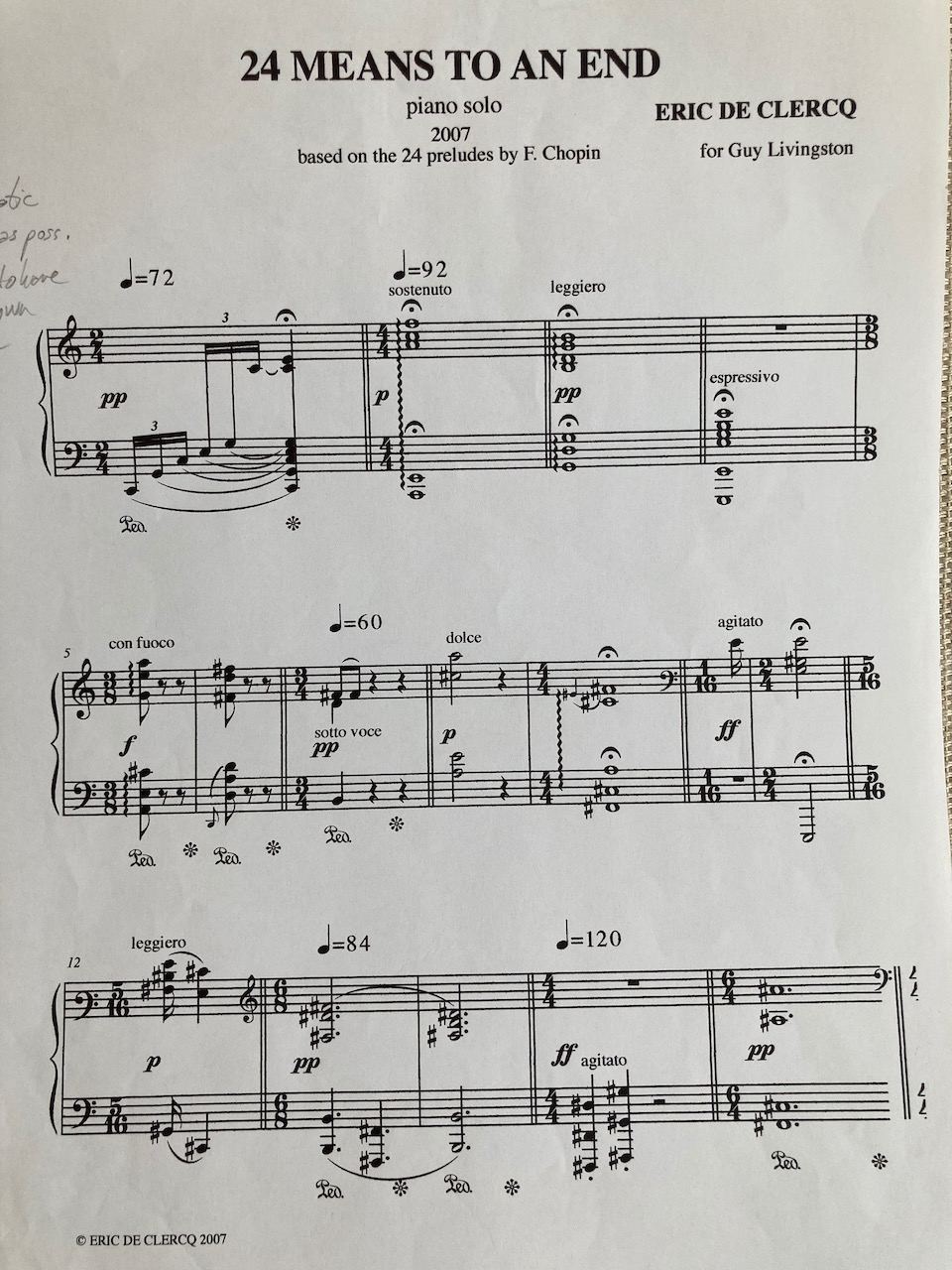Home 1. Introduction 2. Markers 3. Archive 4. Audible Markers 5. Visible Markers 6. Notational Markers 7. Conclusion
3.1. Integrated Silences 3.2. Inherent Silences 3.3. Silent Discourse 3.4. Meta-Silences 3.5. Silencings
These 24 consecutive endings are sourced from the collection of the 24 Nocturnes by Chopin. But Chopin’s intensely romantic notes lose their meaning due to this recontextualization. Made from endings, the artwork should have a sense of finality, but it never does. Twenty-four endings after each other are not a means to an end. Rather, the result seems unfinished.
There are lots of rests in the score, mostly after the endings, but not always. These rests can be performed with exaggerated gestures as if each one were a finale. But that does not work well performatively. In my experience, the composition seems to function better if the performer tries to play the excerpts together, not separately. Should the last ending be much more radical, gestural, and theatrical? Or should they all be the same? The artwork might best keep going in a circle like Satie’s Vexations—it would never have to end.
